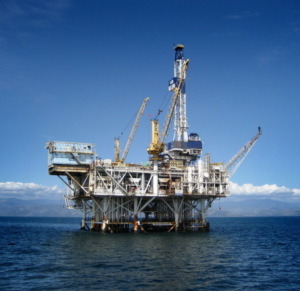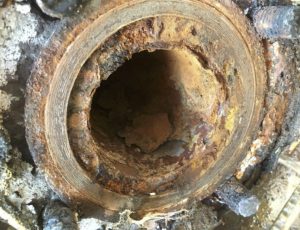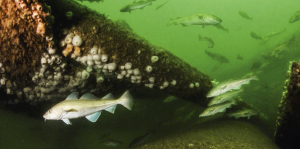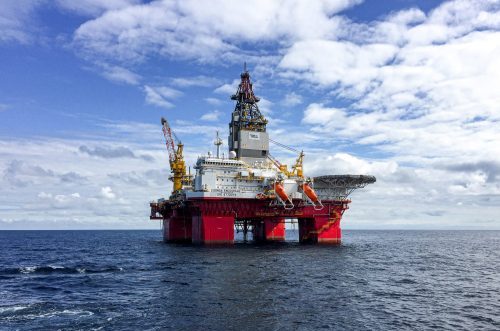The marine Exclusive Economic Zone of Australia is one of the largest in the world, covering a total area of approximately 10 million square kilometres. Our marine industries were estimated to be worth more than A$68 billion a year in 2015-2016 with the oil and gas (O&G) industry being the second largest contributor at over A$23 billion a year (AIMS Index of Marine Industry | AIMS).
Both in Australia and around the world, O&G industries have a significant responsibility around decommissioning offshore infrastructure. By the year 2026, it is estimated that over 65 offshore installations around Australia’s coast and in territorial waters will require decommissioning in some form at an estimated cost of US$39 billion (A$60 billion) over the next 30 years1.

Over the lifetime of O&G infrastructure, as oil and gas are extracted and piped to processing facilities, scale accumulates on the interior surfaces of pipes and other structures, much like cholesterol plaques can accumulate within our arteries, and may persist long after extraction operations have ceased. This scale may containcontaminants including Naturally Occurring Radioactive Material (NORM) and metals, such as mercury.

While the current decommissioning requirement in Australia is for complete removal of all offshore infrastructure by the operator (Offshore Petroleum and Greenhouse Gas Storage Act 2006), there is a possibility for in-situ decommissioning of infrastructure (e.g. leave in place) under certain circumstances and where it is deemed to be environmentally acceptable.

Recent reviews in the scientific literature2,3,4 have argued that partial removal or in-situ decommissioning of infrastructure can deliver better environmental outcomes than complete removal by providing artificial reefs and supporting biodiversity. If in-situ decommissioning occurs, infrastructure will eventually corrode potentially exposing metal and NORM contaminants to the surrounding environment where they could become bioavailable to marine organisms and subsequent bioaccumulation and ecotoxicological effects could occur. There is limited research into understanding the contaminants associated with offshore infrastructure and the risk this could pose to surrounding organisms and human consumers of marine organisms.
Mercury is a key contaminant of global concern. However, the understanding of mercury transport, exposure pathways and toxicity in marine environments and biota is still relatively limited compared to freshwater or terrestrial ecosystems. In addition, there are no inventories or estimates on the amounts or forms of mercury in deep-sea pipelines associated with offshore O&G infrastructure.
Australia is yet to ratify the Minamata Convention. However, when Australia does, the Convention holds all parties accountable for reducing the release of mercury into the environment. In the 2020 Convention Progress Report, the opening statement by the Secretary, Monika Stankiewicz, provided the clear goal of: “The Convention is a promise of a world where people and the environment are protected from the risks posed by mercury pollution” (Minamata Progress Report 2020). This report also states that “Parties are required to ensure that mercury waste is managed in an environmentally sound manner” and that “Managing mercury waste is a long-term imperative of the Convention”.
We need to ensure O&G infrastructure decommissioning is conducted in such a way to minimise environmental harm, and we have a responsibility to protect the marine environment from risks associated with any mercury present within pipeline scale.
The team at ANSTO are conducting research to assess the risks of mercury associated with decommissioning offshore O&G infrastructure to the marine environment. The specific objectives of our research are to:
- Understand the potential for mercury associated with pipeline scale to methylate in the marine environment.
- Conduct bioaccumulation studies using mercury (organic and inorganic) radiotracers (developed at ANSTO) to better define exposure pathways and fate of internalised mercury.
- Understand the biological effects of any bioaccumulated mercury on marine organisms.
Our research will inform and assist industry in planning their offshore O&G infrastructure decommissioning strategies. In increasing our understanding of the risks of mercury associated with pipeline scale, we are not only addressing a data gap around decommissioning, but we will also broaden our knowledge around mercury methylation, transport, bioaccumulation and toxicity in marine environments. This will better inform industry, regulators and other key stakeholders when dealing with potential mercury wastes associated with offshore infrastructure.
By Francesca Gissi ([email protected]) and Tom Cresswell ([email protected]) – Australian Nuclear Science and Technology Organisation
References
- Wood Mackenzie (2020), Australia Oil & Gas Industry Outlook Report.Available at: https://appea.com.au/wp-content/uploads/2020/06/Australia-Oil-and-Gas-Industry-Outlook-Report.pdf
- Fam, M. L., Konovessis, D., Ong, L. S. and Tan, H. K. (2018). Ocean Engineering; 160: 244-263 DOI: https://doi.org/10.1016/j.oceaneng.2018.04.001.
- Fowler, A. M., Jørgensen, A.-M., Svendsen, J. C., et al., (2018). Frontiers in Ecology and the Environment; 16(10): 571-578 DOI: 10.1002/fee.1827.
- Sommer, B., Fowler, A. M., Macreadie, P. I., Palandro, D. A., Aziz, A. C. and Booth, D. J. (2019). Science of The Total Environment; 658: 973-981 DOI: https://doi.org/10.1016/j.scitotenv.2018.12.193.


Twitter